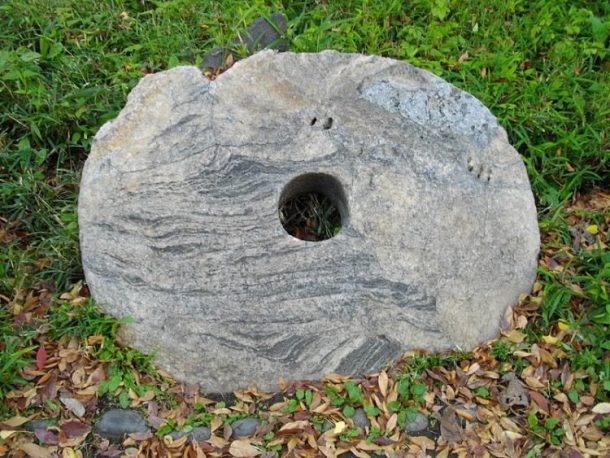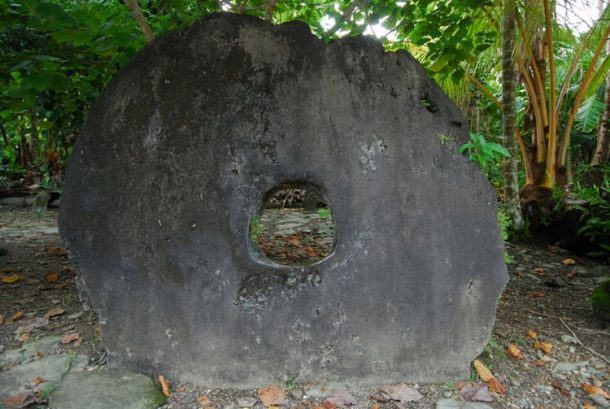The people of Yap, a tiny Micronesian island started using giant limestone disks as money and nobody knows why. Their unique stone money is the world’s largest and heaviest currency and it is still in circulation. The official currency of the Micronesian islands is the US dollar but the people on the island of Yap still use the unusual form of money.
These are giant limestone disks and some are heavier than a normal car. Hundreds of these disks are scattered all over the island and some are located outside of hotels while others are stored deep in the forests. However, most of them are kept in stone money banks that are located in every village.

There are approximately 13,000 stone disks in circulation in yap and their sizes range from 30 cms to 3.5 meters in diameter. The larger ones are considered more valuable.
“It’s not really clear when it happened, but oral traditions talk about a famous navigator who voyaged to Palau and found limestone there,” says Dr. Scott Fitzpatrick, an Associate Professor of Anthropology at the University of Oregon, said about how stone money came to be. “The navigator told his men to carve it in the shape of a fish. Then he looked up at the full moon and the stone reminded him of the bright shiny color of the moon. So he ordered his men to carve the stone into a shape of a disc and perforated it so they could carry it with a timber through the middle.”
The limestone disks hauled from 400 km away were very soon seen as a form of currency in Yap and they were offered as gifts in the beginning but, as people decided they were valuable, they started being used as money. The distinguishing factor was the size of the disks.
“The oral traditions behind each piece were extremely important in estimate to its value. At one point in time, each stone money had its own pedigree,” Dr. Fitzpatrick said. “If a specific navigator was involved in bringing a piece of stone money back it might be more valuable; if a lot of people died trying to get those pieces it might be valuable; even if nobody got hurt.”
Since some of these disks weigh several tons, it is virtually impossible to carry them around. It was decided that if the disks remained in one spot, the owner could change. The stones did not even have to be accessible or on the island for them to have value.
One story narrates that a large limestone disk was being brought to the island when the boat was hit by a storm. The stone ended up at the bottom of the ocean but the crew made it to the island alive. It was decided that the stone still had value and the family that hauled it from Palau were the owners. Someone on Yap still owns that disk, even though it has not been since ever since it sank.

These stones were never used for the day-to-day transactions and were saved for more important transactions. They were considered as the island’s own version of gold. These limestone disks are not used in economics textbooks as a classic example of what money really is.
“We could think that’s crazy, why do Yapese people value limestone?” Allan Layton, a professor of economics at the University of Southern Queensland, told Radio Australia. “Well, why would people in other societies value silver or gold? Or beaver pelts, or pretty colored paper? It’s really remarkable that all the members of the community accept that this is our medium of exchange, currency. It’s really a leap of faith.”


